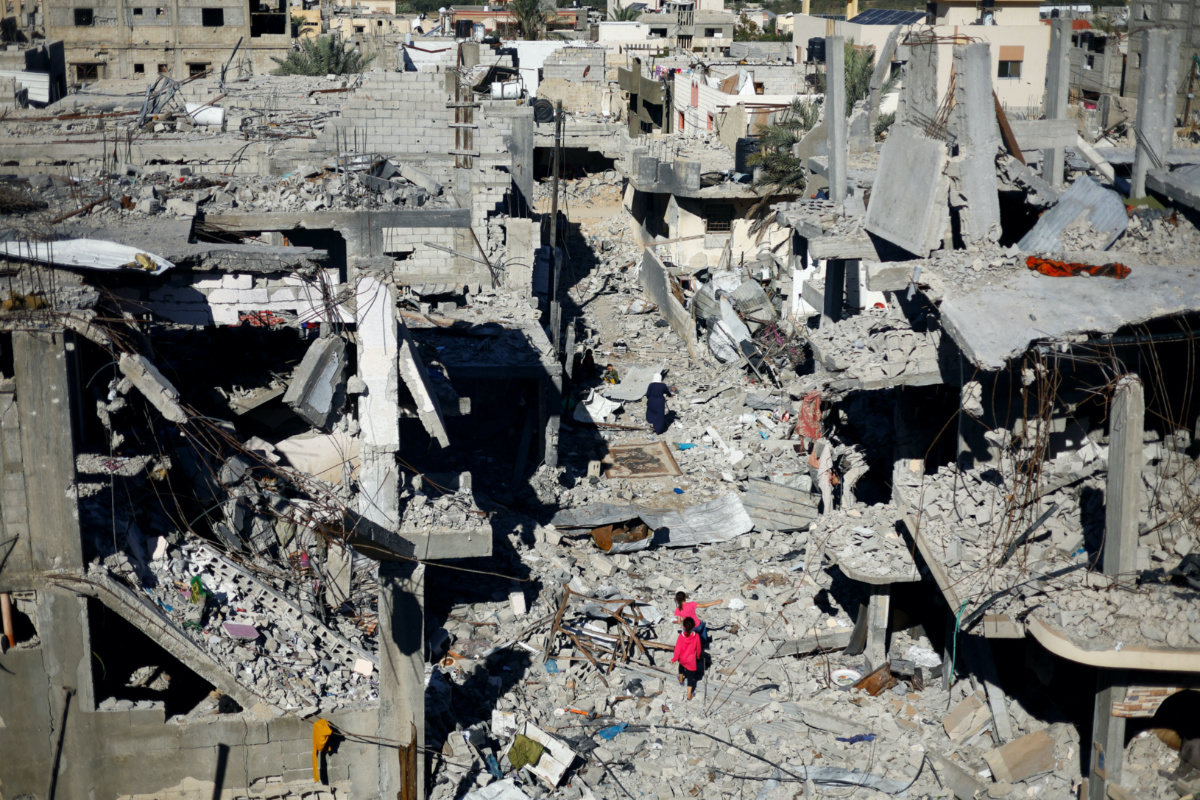Geneva, Swizterland
Reuters
The World Health Organization on Wednesday called for Gaza’s vulnerable health infrastructure to be safeguarded as the war-torn enclave faces an increased risk of epidemics and challenges in detecting infectious diseases.
A fragile truce agreement between Israel and Hamas last week has allowed WHO and aid organisations to increase their deliveries of essential supplies but these have been far from enough to meet the needs of Gaza’s 2.3 million people.

Palestinian children walk among the houses destroyed in Israeli strikes during the conflict, amid the temporary truce between Israel and the Palestinian Islamist group Hamas, at Khan Younis refugee camp, in the southern Gaza Strip, on 29th November, 2023. PICTURE: Reuters/Mohammed Salem
Speaking at a press conference in Geneva, World Health Organization Director-General Tedros Adhanom Ghebreyesus said only 15 of Gaza’s 36 hospitals were still functioning and were completely overwhelmed.
“Of the 25 hospitals north of the Wadi Gaza [river] before the conflict began, only three are functioning at the most basic level, but they lack fuel, water and food,” Tedros said.
“The remaining health system capacity must be protected, supported and expanded.”
WHO has sounded the alarm about the spread of infectious disease in Gaza, where the internal displacement of the population has caused overcrowding in shelters and other temporary living facilities.
The agency has noted a staggering increase in cases of diarrhoea, especially among infants and children, and detected “very serious signals around acute jaundice syndrome” in the enclave.
“With severe overcrowding, the risks are increasing for epidemics of respiratory tract infections, acute watery diarrhoea, hepatitis, scabies, lice and other diseases,” Tedros said.
Tedros, who said that 1.3 million people were currently living in shelters in Gaza, said the enclave had recorded 111,000 acute respiratory infections, 24,000 cases of skin rash and 12,000 cases of scabies since the conflict began.
Mike Ryan, head of WHO’s Health Emergencies Programme, said the detection of infectious diseases in Gaza had become more complicated given that samples could not longer be sent to Israel or the West Bank for processing.
“Not only has Gaza lost its hospital capability, it has lost its ability to confirm even the most basic of diseases,” he said. “This creates a blindspot where we have huge risk of epidemic diseases.”
The WHO welcomed the extension of the truce but said the prospect of the conflict flaring up again was very high and could further harm the health system.
“Any resumption of violence could damage the health facilities and make more health facilities dysfunctional,” said Richard Peeperkorn, WHO Representative in the Occupied Palestinian Territories.
“Gaza can absolutely not afford to lose more hospital beds… We need to make the vulnerable system work again.”






